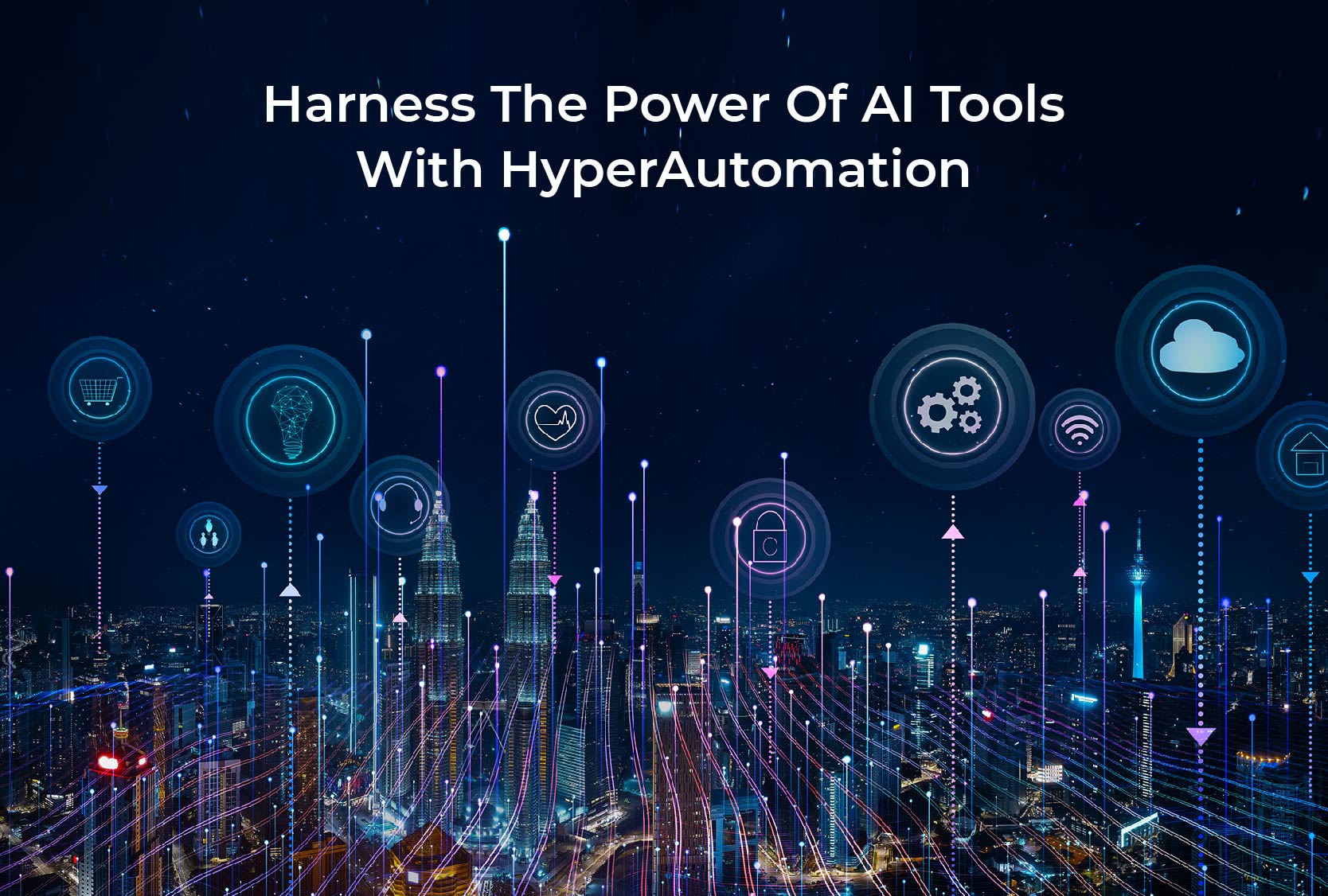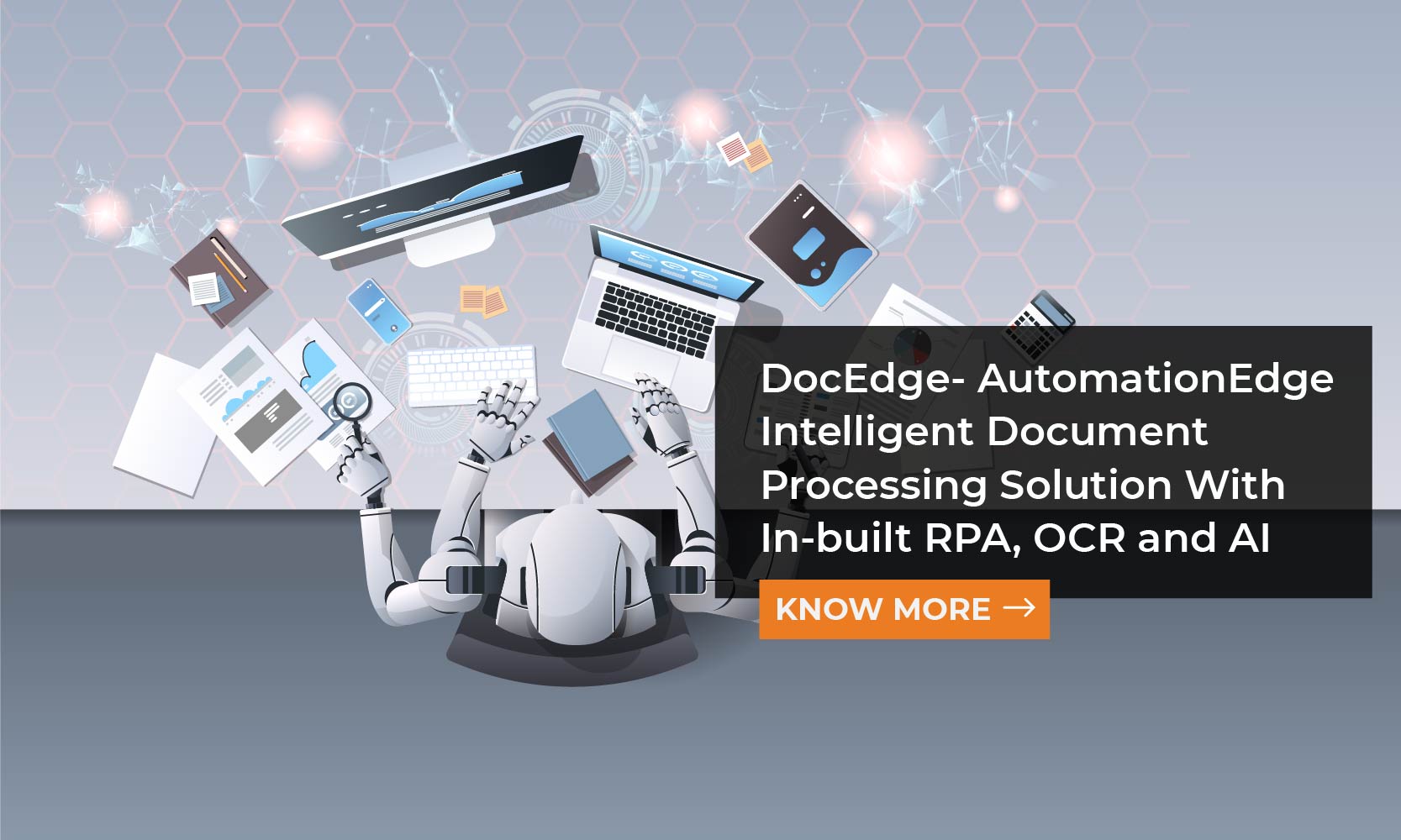Hyperautomation is nothing but the broadening of legacy business process automation beyond particular processes. For example, Hyperautomation offers automation for nearly any repetitive action business users perform by combining AI tools with RPA.
It even automates the already automated by finding the dynamic business processes and creating bots to automate them. As a result, Gartner named hyperautomation as one of the year’s top 10 strategic technology developments.
Hyperautomation is a mechanism for true digital transformation, with tools like Robotic Process Automation (RPA), Machine Learning (ML), and Artificial Intelligence (AI) working together to automate complex business processes—including where subject matter experts were once necessary.
What is Hyperautomation, and how does it work?
Hyperautomation combines multiple aspects of process automation, combining tools and technology to increase the potential to automate tasks.
It starts with Robotic Process Automation (RPA) at its foundation and then adds artificial intelligence (AI), process mining, analytics, and other advanced tools to increase automation potential.
The goal is to automate more and more knowledge labor while also including everyone in the organization in the transformation.
Hyperautomation allows an automated business to reach its full potential.
Machine Learning (ML), Natural Language Processing (NLP), Intelligent Optical Character Recognition (OCR), and AI computer vision are examples of artificial intelligence skills that allow robots to read, see, and process more data.
If you are still confused about the efficiency or need of investing in RPA, check below to know what experts have to say:
Workforce engagement capability
This includes methods for allowing everyone in a company to participate in automation – including the subject matter experts, business analysts, and business users, in addition to the usual RPA developers and testers.
Businesses automate process discovery tools that delve into the inner workings of the teams to reveal what they can optimize and what they should automate.
Advanced analytics help calculate and quantify the return on investment (ROI) and impact of automation on business outcomes that matter to the firm.
Hyperautomation focuses on adding more intelligence and applying a larger systems-based approach to growing automation efforts, rather than referring to a particular, out-of-the-box technology or application. In addition, the method emphasizes the significance of finding the correct balance between automating manual tasks and streamlining complex processes to reduce steps.
The question of who should be in charge of automation and how it should be done is crucial. For example, frontline workers are more likely to notice tedious chores that could be automated. On the other hand, experts in business processes are better positioned to spot the potential for automation in situations where numerous people are involved.
Digital Twin Concept
The concept of a digital twin of an organization was suggested by Gartner (DTO). This is a simulation of how business operations function and what is the mechanism behind their services and deliveries. A mix of process mining and task mining is used to automatically construct and update the process representation. Process mining is a method of constructing a representation of process flows by analyzing enterprise software logs from business management software such as CRM and ERP systems. Task mining creates a view of processes that span many programs using machine vision software that runs on each user’s desktop.
Process and task mining technologies may produce a DTO for the client automatically, allowing them to see how functions, processes, and key performance indicators interact to drive value. The DTO can assist businesses in determining how new automation brings value, opens up new opportunities, or creates new bottlenecks that must be handled.
The Longer Journey to Embrace Digitization
Automation can interact with the world in more ways thanks to AI and machine learning components. OCR, for example, enables an automated procedure to extract text or numbers from paper or PDF documents. Likewise, natural language processing can extract and organize data from documents, such as determining whose company an invoice is from and what it is for and automatically capturing this information into the accounting system.
A hyperautomation platform can be built directly on top of existing technology. RPA is one of the first steps toward hyperautomation, and all of the major RPA vendors are now supporting process mining, digital worker analytics, and AI integration.
Other low-code automation platforms, such as business process management suites (BPMS/intelligent BPMS), integration platform as a service (iPaaS), and low-code development tools, are also incorporating more hyperautomation technology components.
What are the difficulties associated with hyperautomation?
Hyperautomation is a relatively new concept, and businesses are still working out how to put it into effect. The following are some of the most significant obstacles:
- Choosing an organization’s core strategy: Some businesses will benefit from a more centralized strategy to large-scale handling initiatives, while others will benefit from a federated or distributed approach.
- Tools: Hyperautomation software isn’t a silver bullet. Although prominent automation suppliers are extending their hyperautomation capabilities, companies will face challenges ensuring compatibility and integration between these solutions.
- Governance and security: In-depth monitoring and analysis of business processes that span several departments, services, and even country borders can benefit all hyperautomation initiatives. This could result in a slew of new security and privacy concerns. Furthermore, businesses must build suitable safeguards for assessing the security vulnerabilities of automatically generated apps.
- Metrics that are still in their infancy: Automation cost and value assessment tools are still in their infancy
- Manual augmentation is necessary: According to a Forrester survey, only roughly 40% to 60% of the code for automation might be written automatically using existing tools. When creating robust automation at scale, a significant amount of manual effort is still required, and this must be factored into the budget.
- Getting people to buy in: The majority of automation suppliers promote the idea that hyperautomation will complement rather than replace humans, but the truth is that automation will eliminate tasks that were previously performed by humans. In order for these measures to succeed, workers must be convinced that robots will not take their employment. Furthermore, many monitoring technologies employed in hyperautomation initiatives may cause a backlash from knowledge workers concerned about data exploitation.
[Also Read : Top 10 Hyperautomation Use Cases and Examples in 2023]
Hyperautomate, not merely automate!
And to make your digital transformation journey smooth, AutomationEdge is here at your service. Create additional robots. Utilize all available technologies to help you accomplish more, learn more, and realize the true impact of automation on your digital transformation goals. Request a Demo or Contact Us here to bring hyper-automation to your organization.

